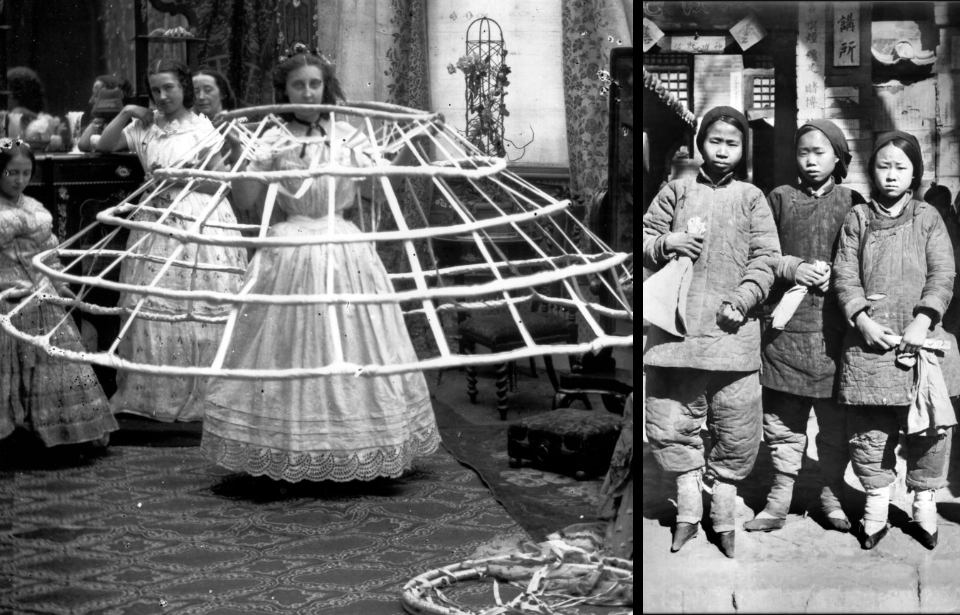Fashion has been constantly evolving throughout time, with different trends becoming popular during different time periods. While some trends make perfect sense for the society they came up in, other trends are real head-scratchers. From the extravagant to the downright impractical, we wonder how these fashion trends ever made it into mainstream use.
Lotus Shoes
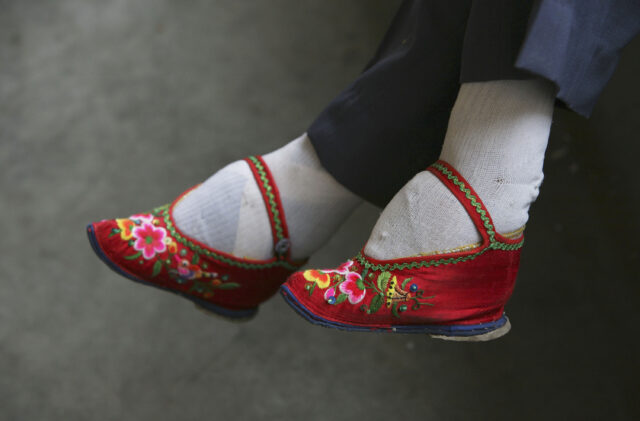
Lotus shoes were these tiny, intricately designed shoes that were once considered the height of elegance in ancient China, symbolizing status and beauty. However, they also represented one of the strangest fashion trends when viewed through a modern lens, primarily because they were worn over bound feet, a practice that caused immense pain and lifelong disabilities for countless women. The process, started before a girl reached the age of seven, was not only a fashion statement but a deeply rooted cultural practice that signified a girl’s transition into womanhood and increased her prospects for marriage.
Arsenic Dresses
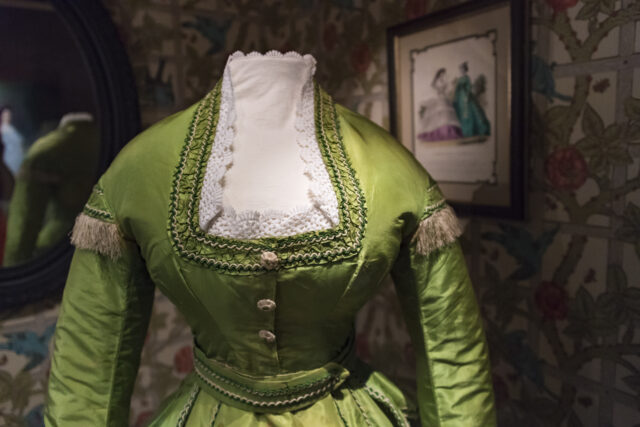
Few trends have been as shockingly hazardous as the craze for arsenic dresses. This trend, which peaked during the Victorian era, included vivid green gowns, the color of which was achieved through the use of arsenic-based dyes. As we know now, arsenic poses a deadly health risk. Unfortunately, during their height, no one knew of the dangers the dresses posed. Instead, they became the height of fashion and a symbol of wealth and high status. However, the cost was far greater than the price tag, as both wearers and those involved in the manufacturing process suffered from arsenic poisoning.
Macaroni
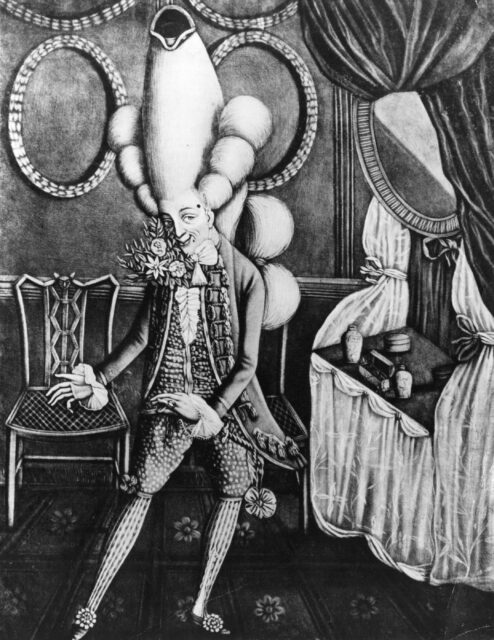
When looking back on the history of fashion, it’s clear that not all trends have stood the test of time. Among them are the famed ‘macaroni.’ Named not for the pasta but for the extravagant style adopted by young British men in the 18th century, this look was comprised of extremely tall wigs with a tiny hat on the top. The term ‘macaroni’ itself became synonymous with a fashion that was considered excessively ornate, to the point of being ridiculous. However, it served as a symbol of wealth and social status, earning it its heyday.
Codpieces
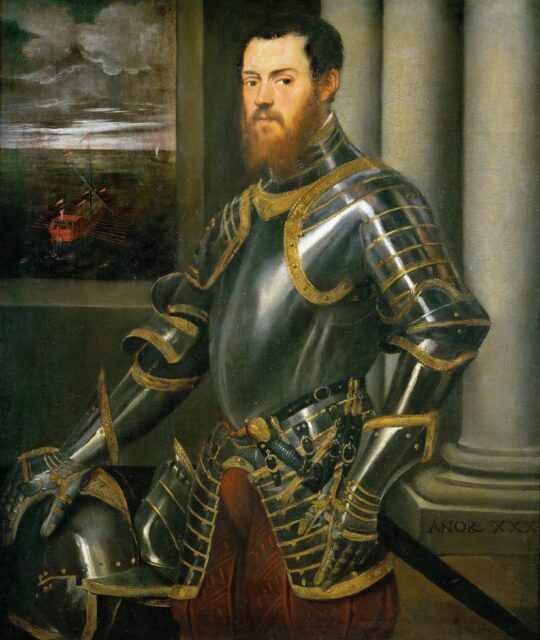
Easily one of the most peculiar fashion trends is that of the codpiece. This fashion accessory, which peaked in popularity during the 15th and 16th centuries, was essentially designed to cover and accentuate the male groin area. At first, it served a practical purpose, but over time, the codpiece soon evolved into elaborate, often exaggerated statements of masculinity, virility, and social status. The trend saw men wearing padded and decorated codpieces, some even equipped with compartments for holding items like coins or sweets.
Crakow Shoes
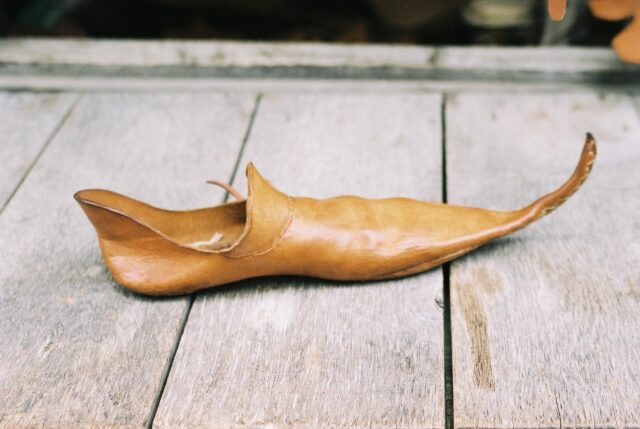
Originating in the late Middle Ages, Crakows were pointed shoes stretching to extreme and awkward lengths. The tips of these elongated shoes, which could extend up to 24 inches beyond the wearer’s feet, were often stuffed with material to maintain their shape. This was a trend that not only tested the wearer’s balance but also their patience, as navigating through doorways and crowded streets was a difficult task. However, this trend was not just a fleeting fancy; it endured for decades, evolving in length and extravagance, and at its peak, even required chains to tether the tips to the wearer’s knees for support.
Hobble Skirts
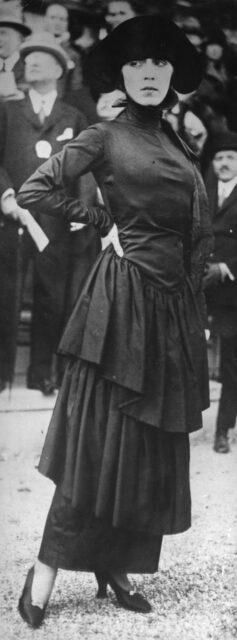
Hobble skirts certainly make this list with their unique yet impractical design. Originating in the early 20th century, these skirts were so narrow at the hem that they significantly impeded the wearer’s ability to walk, hence the name “hobble skirt.” The silhouette was considered chic and fashionable, but it posed obvious challenges for everyday activities, like simply moving from one place to another. Despite the impracticality, the hobble skirt has had its moments of revival in fashion history, illustrating the cyclical nature of trends.
Crinolines
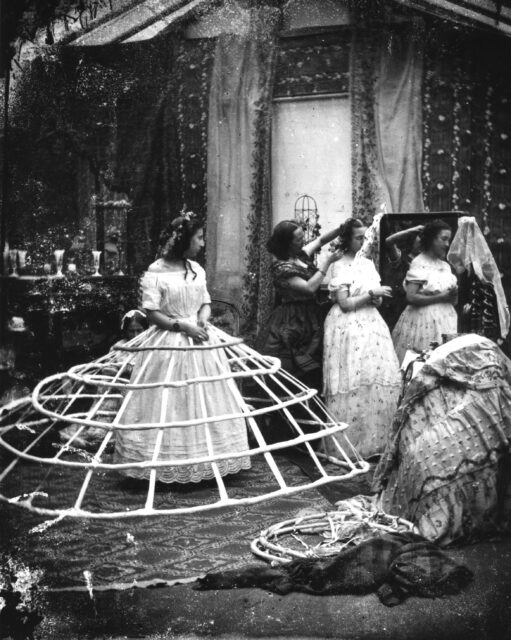
Crinolines were originally designed to give skirts a voluminous, bell-shaped appearance, and in the 19th century, these cage-like structures made from steel or horsehair were all the rage. Yet, despite their popularity, crinolines were far from practical. They restricted movement, made sitting a challenge, and were a hazard near open flames—an issue not to be taken lightly in an era reliant on candles and open fires for illumination.
Chopines
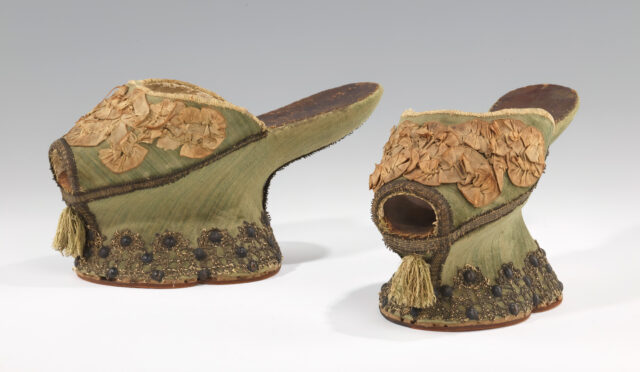
Chopines were towering platform shoes of the 15th to the 17th centuries that were not just a peculiar fashion statement but also a symbol of status and wealth. Originating from Venice, Italy, chopines could reach heights up to 20 inches, making a simple walk across the room an acrobatic feat. The higher the chopine, the more servants were needed to help the wearer move around, which, ironically, showcased their social standing. Interestingly, chopines had practical purposes initially: they were used to protect the wearer’s clothes from mud and street dirt. However, as with many fashion trends, the practicality of chopines was quickly overshadowed by their role as a status symbol until the trend eventually faded.
Read more: Jackie Kennedy’s Wedding Dress Disaster Almost Derailed the Social Event of the Season
It’s only a matter of time before our own fashion trends of the modern era make this list; it’s just a question of which ones…
